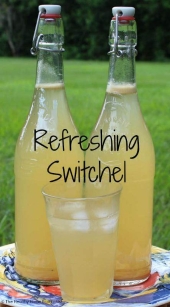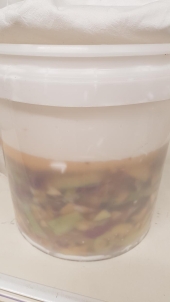





The bravest people are the ones who don't mind looking like cowards. -T. H. White, the Once and Future King
-Talasi
 1
1




“The imagination is the goal of history. I see culture as an effort to literally realize our collective dreams.”
― Terence McKenna




The bravest people are the ones who don't mind looking like cowards. -T. H. White, the Once and Future King
-Talasi
 2
2




It's never too late to start! I retired to homestead on the slopes of Mauna Loa, an active volcano. I relate snippets of my endeavor on my blog : www.kaufarmer.blogspot.com





List of Bryant RedHawk's Epic Soil Series Threads We love visitors, that's why we live in a secluded cabin deep in the woods. "Buzzard's Roost (Asnikiye Heca) Farm." Promoting permaculture to save our planet.

 2
2














It's never too late to start! I retired to homestead on the slopes of Mauna Loa, an active volcano. I relate snippets of my endeavor on my blog : www.kaufarmer.blogspot.com
 1
1




Maureen Atsali
Wrong Way Farm - Kenya
















List of Bryant RedHawk's Epic Soil Series Threads We love visitors, that's why we live in a secluded cabin deep in the woods. "Buzzard's Roost (Asnikiye Heca) Farm." Promoting permaculture to save our planet.
 1
1




Maureen Atsali
Wrong Way Farm - Kenya

 4
4




Maureen Atsali wrote:I gave them a couple days soak, but did not let them sit long enough to get the mold film on top... neither one method nor the other... probably just ruined that batch.
 2
2




Maureen Atsali
Wrong Way Farm - Kenya
 1
1































List of Bryant RedHawk's Epic Soil Series Threads We love visitors, that's why we live in a secluded cabin deep in the woods. "Buzzard's Roost (Asnikiye Heca) Farm." Promoting permaculture to save our planet.

 2
2




Talasi Caslin wrote:Thanks, Tas! I'll try the silica packets because I'm sure I have one somewhere. The seed-bathing source was kinda old and said to put it in w/ a nylon pouch of powdered milk, which was weird. I'd rather use silica, personally!
Hans Albert Quistorff, LMT projects on permies Hans Massage Qberry Farm magnet therapy gmail hquistorff




Standing on the shoulders of giants. Giants with dirt under their nails
















List of Bryant RedHawk's Epic Soil Series Threads We love visitors, that's why we live in a secluded cabin deep in the woods. "Buzzard's Roost (Asnikiye Heca) Farm." Promoting permaculture to save our planet.
 1
1




















List of Bryant RedHawk's Epic Soil Series Threads We love visitors, that's why we live in a secluded cabin deep in the woods. "Buzzard's Roost (Asnikiye Heca) Farm." Promoting permaculture to save our planet.
 1
1









|
I'm so happy! And I wish to make this tiny ad happy too:
Support permies and give beautiful gifts to gardeners: permaculture playing cards.
https://gardener-gift.com/
|






